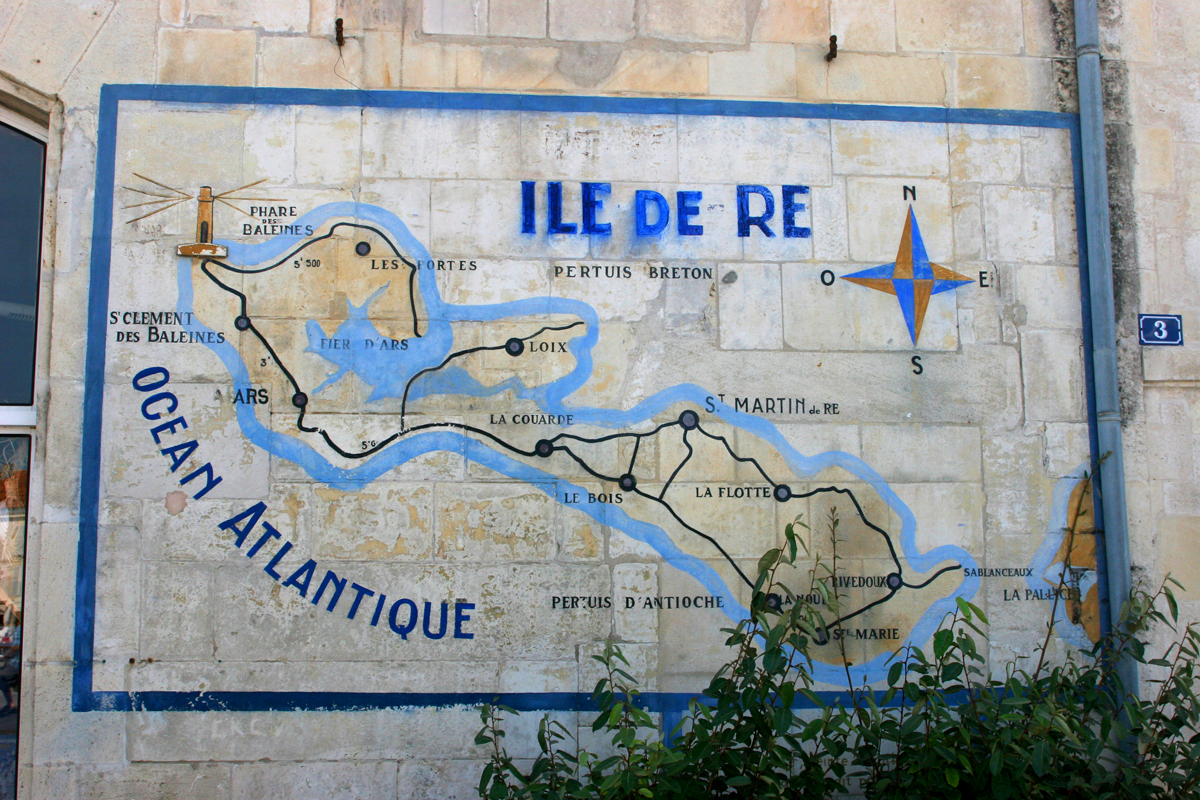I know what you’re thinking: Where the hell, exactly, is Île de Ré? Well, it’s on the Atlantic Coast about midway between Paris and Bordeaux. Except you can almost never find it on a map because it’s so small—less than 20 miles long and no more than 3 miles wide at most (in some places you could easily throw an oyster from one side of the island to the other). If you had a map of it, which I never seem to have, it would look a bit like a seahorse. I rather like that image. My hotel, Chat Botté (just saying it—shaw bo-TAY—makes me feel happy) is way up at the top of the island in the village of St.-Clément des Baleines, just a short bike ride from an old stone lighthouse (pharo) that I’ve yet to see.
Ages ago—back when the French still liked Americans—it was actually an archipelago consisting of three even smaller islands. Eventually the shallows between the islands filled in and became salt marshes. The fleur de sel—which many say is the sweetest and best in all the world—made the island rich at one point. We can’t imagine making a fortune from salt, but then we tend to forget that before there was dry ice and Sub-Zero refrigerators, peopled preserved things like cod by packing them in barrels and barrels of salt. No salt, no long ocean voyages to the New World.
The other thing the island has always been known for is its shellfish, particularly oysters. In December, Île de Ré packs and ships over 40 tons of oysters every day to the rest of France (the French are as crazy about oysters as I am).
So, salt and oysters—what else do you need? Well, maybe a little wine. And some potatoes. So they grow spuds here and make wine as well. The thing is, the farmers on Île de Ré didn’t just plant grapes or harvest oysters. They did it all. They’d farm the salt in summer, harvest grapes in the fall, and, when they had time, dig a few spuds or look after the oysters. They were Jacques-of-all-trades. And self-sufficient, which they needed to be because of their relatively isolated status.
Then in 1988, France built a bridge to the island and everything changed. Lots of Parisian day trippers arrived. Lots of cars. But rather than build more roads, which they didn’t have room for anyway, they built bike trails. Literally a hundred miles of trails. And since the island is so small, that’s pretty much how everyone gets around. Including me.


Recent Comments